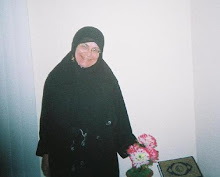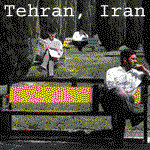The March to War: Political Crises in Lebanon and Palestine
by Mahdi Darius Nazemroaya
Global Research, December 16, 2006
Lebanon and Palestine are both unique lands on the shores of the Eastern Mediterranean and within the Levant; they are two ancient lands that have seen great armies and navies come and go in the course of history. Under various names and identities, both Lebanon and Palestine have seen more than their share of bloodshed and violence as different groups, interests, and entities have sought in the course of history to take control of their lands.
The populations of Lebanon and Palestine are now deep-rooted in a struggle within a broader geopolitical context that goes beyond the borders of their respective territories; one with far-reaching consequences.
The United States, Britain, Israel and their allies are now in a intense face-off against Iran, Syria, the Palestinians, and other independent regional forces, which stand aloof of the Anglo-American orbit.
It may appear that the military phase of the Anglo-American roadmap has been temporarily slowed, almost to a standstill or pause. With the seemingly lethargic pace of the schedule of the Anglo-American roadmap that is emerging in the Middle East, new steps are being taken in confronting the forces of resistance in the Middle East. One of these is the Baker-Hamilton Iraq Study Group (ISG) report which essentially views the entire Middle East as an integrated zone of conflict, which requires a broader approach by the United States and its allies.
Lebanon: Birth Place of the Project for the “New Middle East”
Lebanon is one of the theatres in the Middle East, just as Palestine is another theatre, where indigenous forces are facing-off against forces propped up by foreign powers from outside the region. Lebanon is additionally linked through Anglo-American strategic planning with the situation in Iraq, the Palestinian Question, and the American threats directed against Syria and Iran. The current crisis in Lebanon and the ongoing militarization of the Levant is only one piece of a larger arrangement. Because of Lebanon’s geographic position in the Middle East, control of Lebanon is a vital step in guaranteeing Anglo-American ascendancy in the Middle East.
Beirut is currently a venue where foreign rivalries and contentions are being played out. Lebanon is one of several pressure points in the region, along with Iraq, Palestine, and Kurdistan, from which a “New Middle East” can be created to satisfy the objectives of the Anglo-American alliance and Israel. Lebanon can provide security to energy haulage and a vital component of a land bridge, which also includes Syria, for the Baku-Tbilisi-Cehyan (BTC) Oil Terminal from Turkey to Israel.
Lebanon is strategically vital for providing the Anglo-American alliance and its partners with military positions to control the energy stream in the Eastern Mediterranean. For these reasons and several others, Lebanon also has significant strategic value for the interests of Israel, the United States, France, Syria, Britain, and Iran—including Russia and China, which is evident from their military involvement in the small Arab state after the Anglo-American sponsored Israeli siege of Lebanon. Russian interests are also highlighted by the Russian position at the United Nations with regards to Lebanon and the recently planned visit of the Lebanese Prime Minister to the Russian capital, Moscow.
The United States is currently supporting a client government in Beirut that serves Anglo-American and Israeli interests in the Eastern Mediterranean and the Middle East. Besides energy security in the Eastern Mediterranean, Lebanon can serve as a multi-facet bridgehead into Syria. Although Syria was hegemonic in Lebanon, current Syrian interests in Lebanon are linked to Syrian national security concerns in regards to real threats of various forms from the Anglo-American alliance and Israel; this includes regime change and the establishment of an international tribunal that appears to be targeting Syria. Lebanon is unquestionably a multi-level steppingstone for attempts of overwhelming Syria and also attempts at marginalizing Iran.
Lebanon and Palestine
The duplicity of the foreign policy of the United States and its allies is becoming crystal clear in regards to “democratization” in the Middle East. The goal is not to spread democracy, but to establish a series of puppet, client governments that serve Anglo-American financial, military, and strategic interests in the region. These governments for all intents and purposes are undemocratic in nature, but termed as “moderate.” The situations in both Lebanon and Palestine share startling similarities, although Palestinians face military occupation and the Lebanese face strengthening foreign induced sectarian tension(s).
In Palestine a majority government dominated by Hamas is under siege from the United States, Israel, and Fatah with the support of the European Union and most Arab governments. The Hamas-government is also desperately trying to create a “national unity government,” with Fatah and its leader, Mahmoud Abbas the Palestinian President. It is ironic that the political party with the majority in Palestine has been reduced to a position where it has to plead with Fatah—which has been holding out—to create a “national unity government.” Fatah under the influence of the United States and with the help of Israel, Saudi Arabia, Egypt, Jordan, and the Arab Sheikdoms of the Persian Gulf is attempting to utterly squash the Hamas-government of Palestine because of its resistance to Anglo-American objectives vis-à-vis collaboration with the Israeli government.
In Lebanon the National Opposition is demanding the formation of a “national unity government” to ensure that “the State” acts in the interest of Lebanon's citizens rather than serving the interests of the U.S., France, and Israel. In both Lebanon and Palestine the political entities and individuals rejecting the creation of “national unity governments” are collaborating with the United States and supported by the United States, Israel, Britain, and Saudi Arabia amongst others. In parallel, the groups trying to create “national unity governments” in Lebanon and Palestine are indigenous forces resistant to foreign tutelage and supported by Iran and Syria for various reasons.
The Road to Damascus goes through Beirut: the March towards the “New Middle East”
The Anglo-American military roadmap can not go forward until both Palestine and Lebanon are pacified; this means that the Opposition and Resistance Movements of both states must be defeated. The international tribunal on the assassination of the late Rafik Al-Hariri, former Prime Minister of Lebanon, has been established precisely with that purpose in mind. It is worth mentioning that Rafik Al-Hariri was not in an official position or in the post of prime minister at the time of his assassination and that a single tribunal is being established for one individual outside of officialdom, when thousands of people, including government officials, have been murdered or have been killed because of American, British, and Israeli war crimes or actions; but no tribunal has been established to bring justice for their deaths.
The investigation into the assassination of the late Al-Hariri has been politicized and is being fashioned into a pretext for furthering the Anglo-American roadmap in the Middle East and creation of the “New Middle East.”
U.S. Secretary of State, Condoleezza Rice sums up the “game plan” in regards to the international tribunal:
“The Hariri tribunal has got to go forward. First of all, it’s under Security Council resolution. (…) Third, it’s a matter of showing that people who assassinate leaders can’t do so with impunity. The Hariri tribunal has got to go forward and I’ve heard no one in the March 14th coalition [the Future Movement and its political allies] suggest anything to the contrary,” and that “the future of Lebanon is not an issue for negotiation with anybody [signifying Iran and Syria, but also including the people of Lebanon themselves too].”
Israel has also been continuously charging that Syria is preparing for war, while NATO, besides its position off of the Syrian coast, has also started creeping into the Persian Gulf with a “Persian Gulf Initiative,” targeted at Iran, Syria’s ally. It is unmistakable that Lebanon and Palestine are two theatres of a broader chess game unfolding in the Middle East that must be won before the Anglo-American roadmap can progress or think of progressing towards Syria and Iran and the redrawing of the Middle East. Just as in the past, religion and patriotism have been used as both places of refuge, such as in the case of Fouad Siniora's government in Lebanon, and pretexts; in both Lebanon and Palestine religion, self-identity, and patriotic emotions are being used and misquoted as a tool of manipulating the local populations. It will be in Lebanon and Palestine that the pace onwards towards the “New Middle East” will be determined. Thus the march towards possible war in the Middle East shifts forward from the direction of the Levant, with its besieged populations.
MAP OF THE "NEW MIDDLE EAST Map: click to enlarge
Map: click to enlargeNote: The following map was prepared by Lieutenant-Colonel Ralph Peters. It was published in the Armed Forces Journal in June 2006, Peters is a retired colonel of the U.S. National War Academy. (Map Copyright Lieutenant-Colonel Ralph Peters 2006).
Although the map does not officially reflect Pentagon doctrine, it has been used in a training program at NATO's Defense College for senior military officers. This map, as well as other similar maps, has most probably been used at the National War Academy as well as in military planning circles.














1 Comments:
Ann.,
You seem to be all over the place with your information; you need to clarify, please.
Post a Comment
<< Home